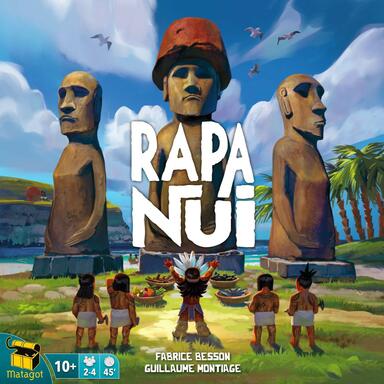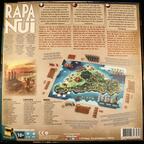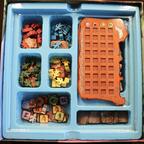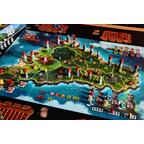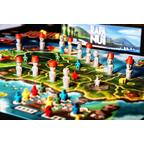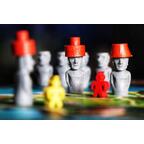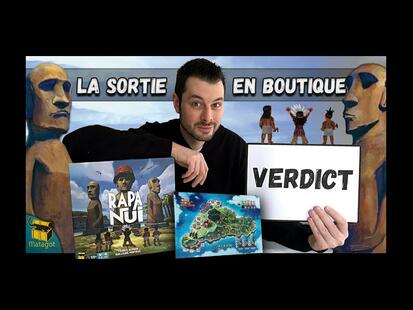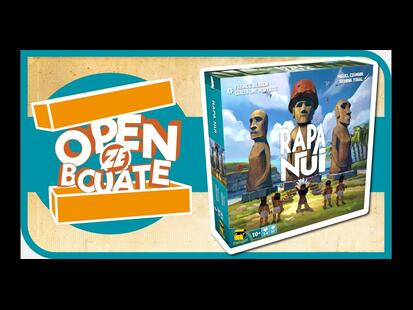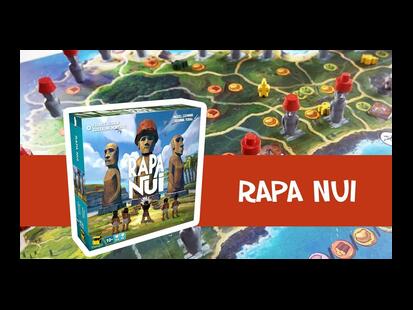Between the 13th and 17th centuries, more than 900 monumental statues, the moai, were erected on the Polynesian island of Rapa Nui, also called Easter Island. Standing on huge stone terraces called ahu, the moai were often adorned with red stone headdresses, the pukao, along the coastline, looking inland. Players carve, transport and erect moai to earn resources, then turn these resources into offerings by capping the statues. The player with the most offerings at the end of the game wins. Each round consists of 3 phases.
Players take turns sending one of their figures onto the board until all figures have been placed. The wizard decides the order of the next turn and the villagers are placed on the board to become carriers or carvers. Depending on the number of carvers in the Quarry, players get different sized Mosaics. The Moai or Pukao must then be transported to an area of the board by a continuous chain of transporters, whether they belong to your clan or not. Once you have reached your destination, a player may erect a Mosaic and take the corresponding Ahu tile, as well as one or more Resources depending on the size of the Mosaic erected. Capping your Moai will allow you to turn your Resources into Offering tiles. The player who accumulates the highest value of offerings at the end of the game wins.
Rule, Educational Sheet ... 2 Files Available2 Files Available
Download the rule for Rapa Nui or any other documents (scenarios, goodies, pedagogical sheet, erratum, ...). 2 PDF files are available. See all available files
Contents of the box : 1 double-sided board, 21 Moai figures of 3 sizes, 20 Pukao headdresses, 2 Villager figures, 27 Offering tiles, 29 Ahu tiles, 2 game aids, 1 Master Tailor token. For each player and his colour: 7 figurines, 1 individual board, 4 Improvement tiles, 1 Rongo Tablet tile, 4 Resource cubes, 1 Animal totem token.
